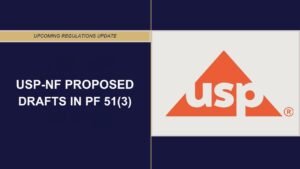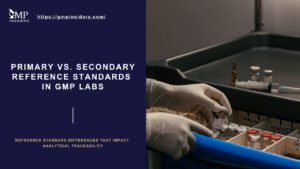The FDA conducted an inspection at MedOffice Saglik Endustri Anonim Sirketi’s facility in Turkey from May 6 to 10, 2024, identifying significant violations in Current Good Manufacturing Practice (CGMP) standards for finished pharmaceuticals. Key issues identified included failures in laboratory testing, component verification, and process validation, which affected the compliance of products with the FD&C Act (Federal Food, Drug, and Cosmetic Act).
These violations present product quality and safety risks, potentially impacting consumer health due to unverified product specifications and ineffective process controls.
Key Non-Conformances Identified
Some of the non-conformances identified during the inspection were:
1. Inadequate Testing of Drug Products
MedOffice Saglik Endustri failed to conduct necessary tests to verify the identity and strength of active ingredients in certain over-the-counter (OTC) drug products before their release to the market. By not performing identity and strength tests, the company could not confirm that these products contained the required active ingredient at the appropriate concentration or were free from harmful contaminants.
This testing oversight applied to batches intended for the U.S. market, presenting a risk of non-compliant or potentially unsafe products reaching consumers.
Additionally, the lack of adequate microbiological testing meant there was no guarantee that batches were free from objectionable organisms, further risking contamination and reduced product safety. Without thorough batch testing, MedOffice cannot ensure its products consistently meet the quality specifications necessary for safe use.
2. Insufficient Component Verification
The facility failed to adequately verify the identity of each component used in drug production and did not confirm the reliability of Certificates of Analysis (CoAs) provided by suppliers. In particular, the firm did not conduct identity tests for incoming components, including active pharmaceutical ingredients (APIs), instead relying on CoAs without further validation.
This practice means that the firm did not have evidence-based assurance of the components’ quality, strength, or purity, as required by CGMP. The FDA requires that manufacturers validate the authenticity and reliability of each lot of incoming components to prevent the use of substandard or potentially harmful materials. Without reliable component verification, the firm risks introducing adulterated products into the market due to the possible variability or unsuitability of raw materials.
3. Lacking Process Control and Validation
The facility did not establish validated manufacturing processes or sufficiently qualify equipment, which is crucial to maintaining consistent and safe drug production. Specifically, MedOffice Saglik Endustri did not have adequate procedures to demonstrate that their manufacturing processes would reliably produce drug products that meet their intended specifications for identity, strength, quality, and purity.
RELATED: Qualification vs Validation
Additionally, equipment shared between drug and non-drug products was not properly validated for cleanliness, increasing the risk of cross-contamination. Process validation is essential to ensure the manufacturing process consistently produces products meeting quality standards, with robust process controls in place to monitor production variations. Lacking such controls could result in inconsistencies within batches or between batches, further compromising product integrity and safety.
Recommended CAPA Plan
To address these critical deficiencies, MedOffice Saglik Endustri Anonim Sirketi’s facility must implement a comprehensive CAPA plan. Below are the recommended actions for each non-conformance:
1. Inadequate Testing of Drug Products
Root Cause Analysis
- Testing Non-Conformance: The failure to establish a systematic approach to routine identity and microbiological testing contributed to insufficient quality assurance. This gap meant products were released without fully confirming their quality and safety.
Corrective Actions
- Establish Comprehensive Testing: MedOffice Saglik Endustri is advised to develop and document complete procedures for chemical and microbiological testing, which should be applied to each batch prior to market release. These procedures should cover testing for active ingredient identity, strength, quality, and purity, ensuring the drug products meet all regulatory and quality standards.
Preventive Actions
- Develop and Implement a Risk-Based Testing Framework: Establish a risk-based testing approach to determine the frequency and scope of identity and microbiological tests based on the criticality of each product. This framework will help prioritize high-risk batches, ensuring comprehensive testing coverage aligned with product risk profiles.
SEE MORE: Quality Risk Management in GMP
- Implement Automated Testing Systems Where Feasible: Use automated testing equipment to reduce human error, enhance repeatability, and increase the accuracy of routine identity and microbiological testing. Ensure these systems are validated and maintained as part of the QMS.
- Strengthen Quality Management System (QMS) Integration: Fully incorporate testing protocols into the Quality Management System, ensuring these procedures are reviewed, updated, and improved regularly. Align routine testing procedures with QMS standards to facilitate a structured approach to maintaining consistent quality.
- Personnel Training and Competency Verification: Conduct regular training sessions on testing methodologies, sampling, and quality standards to reinforce understanding among staff members. Assess competency frequently to ensure testing personnel have up-to-date knowledge and skills necessary for accurate and consistent results.
2. Insufficient Component Verification
Root Cause Analysis
- Testing Non-Conformance: The reliance on supplier-provided COAs without additional verification processes led to quality gaps in the use of unverified raw materials.
SEE MORE: Supplier Qualification in GMP
Corrective Actions
- Implement Reliable Supplier Verification: The firm should perform independent verification of COAs by testing incoming raw materials at predetermined intervals, ensuring they meet quality specifications. Additionally, MedOffice should conduct periodic audits of suppliers to confirm the reliability of their testing data and maintain control over component quality.
Preventive Actions
- Quality System Enhancements: MedOffice should create comprehensive Standard Operating Procedures (SOPs) that will standardize quality control across all manufacturing operations. This includes procedures for equipment qualification, supplier qualification, and verification of incoming materials.
- Periodic Review and Validation: MedOffice is advised to establish a program for regular audits and revalidation to ensure supplier COAs continue to be reliable. This will provide added control over the quality of raw materials and prevent potential contamination or adulteration issues.
- Develop and Maintain Supplier Quality Agreements: Implement quality agreements with all suppliers, clearly outlining specifications, testing standards, and expectations for data accuracy on COAs. Include clauses that require suppliers to notify MedOffice Saglik Endustri of any changes to their testing methods or quality control processes.
- Enhance Documentation and Traceability Systems: Integrate traceability tools to document each batch of raw materials, including COA data, test results, and supplier details. Ensure this documentation is maintained in a centralized system for easy access and audit readiness.
SEE MORE: How to Prepare for a GMP Inspection
- Employee Training: A critical preventive measure includes enhanced CGMP training for all staff involved in manufacturing, quality assurance, and control. Training should cover FDA regulatory requirements and emphasize the importance of adhering to CGMP standards, particularly in testing and validation processes.
3. Lacking Process Control and Validation
Root Cause Analysis
- Process Validation: Inadequate process monitoring and validation procedures contributed to insufficient controls, which failed to confirm that manufacturing processes consistently met the required standards for quality and safety.
Corrective Actions
- Validate Manufacturing and Cleaning Processes: To ensure a consistent state of control, the company is advised to establish a robust process validation program. This should include performance qualification (PPQ) for equipment and validation protocols that account for worst-case scenarios in cleaning.
Preventive Actions
- Develop a Comprehensive Process Validation Master Plan: Create a detailed process validation master plan that outlines the stages of validation (e.g., Installation Qualification (IQ), Operational Qualification (OQ), Performance Qualification (PQ)), criteria for acceptance, and continuous process monitoring. This plan should cover all critical manufacturing steps, ensuring that processes remain in a state of control throughout the product lifecycle.
SEE MORE: Validation Master Plan (VMP)
- Implement Routine Monitoring of Critical Process Parameters (CPPs) and Quality Attributes (CQAs): Identify and monitor critical process parameters (CPPs) and critical quality attributes (CQAs) that directly impact product quality. Use statistical process control (SPC) to analyze these parameters in real time, enabling early detection of any deviations from validated standards.
- Periodic Re-Validation Protocols: Schedule re-validation of manufacturing and cleaning processes at regular intervals or after any significant change in equipment, process, or formulation. This ensures the processes continue to meet the required quality standards even as operational conditions evolve.
- Enhance Staff Training on Validation Protocols and Process Control: Provide targeted training for production, quality, and maintenance teams on process control, monitoring, and validation protocols. Training should cover the rationale behind validation steps, the significance of CPPs and CQAs, and the correct use of monitoring equipment.
Timeline for Implementation
Our recommendations for Implementation of the CAPA Plan include:
Immediate Actions (0-3 Months)
- Develop and implement SOPs for batch testing, including established specifications for active ingredients and microbiological testing limits. A preliminary review of supplier COAs should also be initiated to assess their reliability, and initial verification testing should commence.
Short-Term Actions (3-6 Months)
In this period, MedOffice should fully implement component testing protocols for all incoming materials, which includes verifying the reliability of supplier COAs. Additionally, the firm should complete initial performance qualification (PPQ) for major manufacturing processes and verify equipment functionality to ensure consistency in drug production.
Long-Term Actions (6-12 Months)
Over the long term, MedOffice should establish an ongoing monitoring program to track consistency within and between production batches. A comprehensive cleaning validation program should be finalized, incorporating worst-case analysis for equipment cleaning challenges. This will help maintain high standards of cleanliness and prevent cross-contamination risks.
Conclusion
MedOffice Saglik Endustri Anonim Sirketi is urged to address all identified non-conformances and implement corrective actions to align with CGMP compliance requirements. Due to these violations, the firm has been placed on Import Alert 66-40, affecting its ability to supply drug products to the U.S. market until the FDA confirms the completion and effectiveness of all corrective actions.
MedOffice must submit a detailed response to the FDA within 15 working days, outlining completed corrective actions and a timeline for any actions that remain pending.
Read the full FDA’s warning letter on their website.















